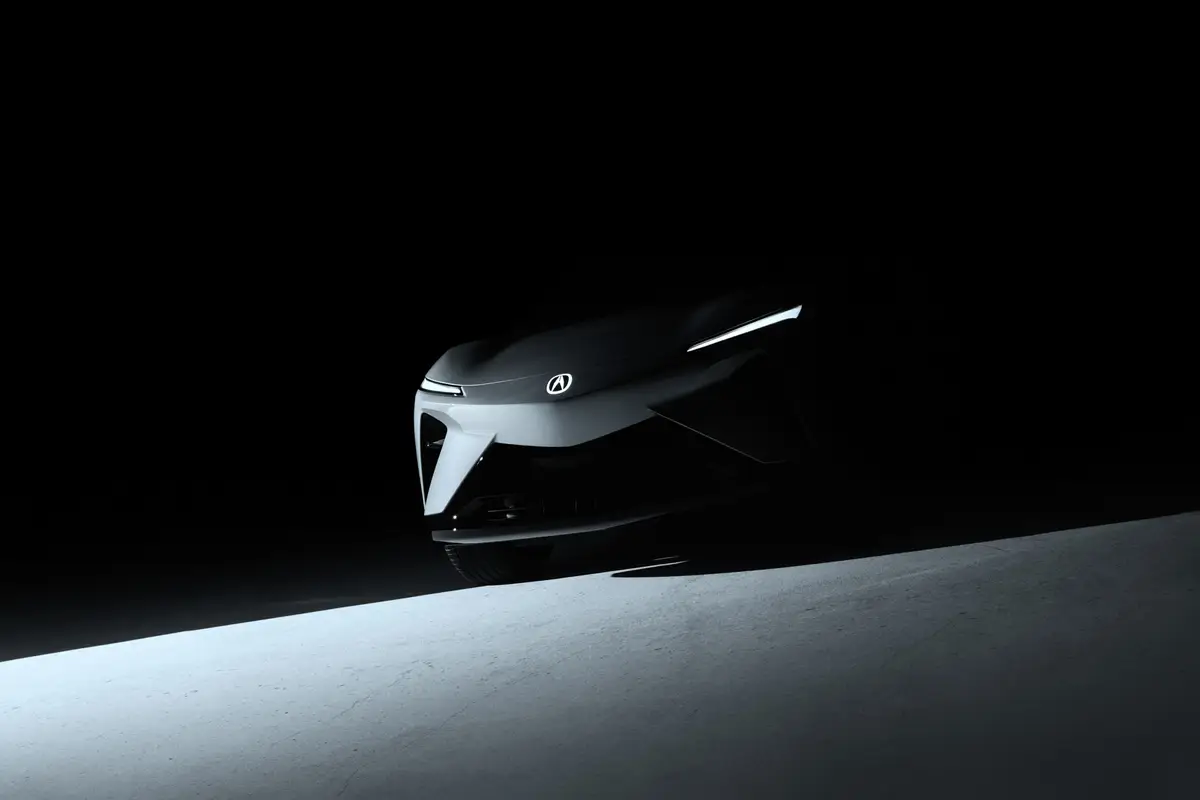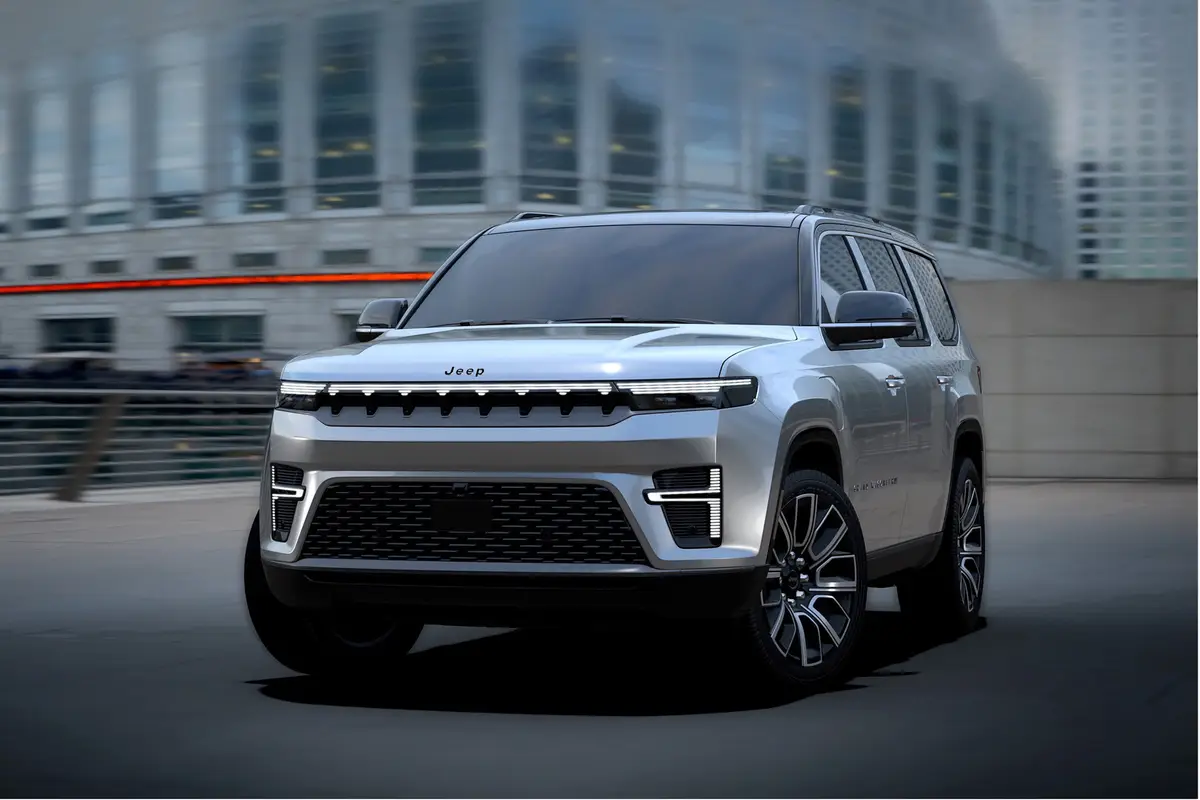chicagotribune.com's view
First time our baby blues focused on the 2000 Cadillac DeVille was in the hallway of the General Motors design studios in Warren, Mich., about three years ago.
Cadillac, bursting with pride over its upcoming DeVille, invited a handful of journalists to share the excitement.
When the tarp was pulled off the prototype, none of the media exhibited heart failure, had a mind-altering experience or jumped out of their shoes in a rush to caress the fiberglass.
The only reaction we recall was several journalists reaching to cover their mouths in a prolonged yawn over what looked something like the offspring of a Lincoln that had fooled around with an Infiniti.
Sadly, those anticipating a dramatic and monumental styling remake of the 2000 DeVille will be disappointed. Seems that ingrained in the designers’ psyche is the fact any DeVille built between now and Armageddon must carry the traditional cues–Caddy crest, vertical taillamps and conservative sheet metal.
If the boldness of the designers’ strokes in creating the Jaguar S-Type, Volkswagen Beetle, Audi TT or Dodge Ram pickup awakened your soul, the blandness of the 2000 DeVille will put it back into hibernation.
Too bad, because inside and underneath, the 2000 DeVille features a host of technological advances, primarily Night Vision (Transportation, May 23), the most significant technological innovation in motoring since headlights, windshield wipers and the drive-up window at Mickey D’s.
Night Vision, very simply, is a thermal infrared heat imaging system similar to that used in the Gulf War that allows the motorist to spot people or animals or objects in or near the road regardless of weather.
Neither rain, sleet, snow, fog or darkness of night will keep your DeVille DHS or DTS from delivering you from point A to point B when equipped with optional Night Vision.
Traveling in fog? Look at the Night Vision’s head-up display at the bottom on the windshield and you see the virtual image (hot objects appear white, cooler objects black and both look like black-and-white photo negatives) of the stalled car or deer or jogger in or along the road–beyond the limits of your headlamps. Safety and security to the max.
However, if on/off and location controls (need ed to adjust the system for a higher or lower sight line in the windshield screen based on short or tall driver trying to see it) were higher on the dash rather than below it, usage would be considerably easier.
We tested the top-of-the-line DeVille DTS, formerly the Concours. Night Vision is a $1,995 option, the same price as the optional navigation system. Both might be nice to have, but if it came down to our last $1,995, Night Vision would get the call and we’d pay Rand McNally for a map.
Night Vision takes the fear and uncertainty out of driving. And, when you pull up to the house at night, it warns of someone lurking in the bushes or by the door. You couldn’t hire an off-duty cop for $1,995 to offer you that peace of mind.
There is one potential problem with Night Vision, however. Cadillac played it conservative and ordered only 6,000 units from the supplier.
Even as you read this, Caddy is meeting to figure out a way to boost output b ased on rave reviews of the system from media who have experienced it. There had been reports that Caddy can’t hope to increase supplies until 2002, which Caddy said is overly pessimistic.
Other than Night Vision, the DTS also offers GM’s OnStar emergency communication system as standard. It will summon medical or mechanical aid when needed–automatically if the air bags deploy.
Another new system for 2000 is Ultrasonic Rear Parking Assist, in which sonar sensors are embedded in the rear bumper that give off a series of beeps to warn a driver who’s backing up that a kid on a bike or the pet or the garbage can is in the way.
The system primarily will be of greatest use to those who employ the Braille method to parallel park, pulling back and forth and smashing head and/or taillamps.
Two other key features of the 2000 DTS we tested are an upgrade to the standard StabiliTrak (optional in DHS and base DeVille) and Variable Road Sensing suspension, systems designed to give the motorist total control of the car by keeping the vehicle in total control of the road.
StabiliTrak, as the name implies, is designed to keep the driver from skidding or spinning out. Very simply, it uses a host of sensors to measure the driver’s intentions (based on steering-wheel angle) against vehicle response.
In addition to steering angle, sensors monitor lateral acceleration and yaw rate or lateral movement as well as vehicle speed. If the vehicle isn’t headed in the direction pointed, brakes are automatically activated at the point of slippage.
For 2000, sensors have been added to measure lateral slippage, to apply the brakes when loss of traction is detected and to automatically adjust the power steering to increase steering effort when low traction or an emergency evasive steering maneuver is detected.
And to complement StabiliTrak, continuously variable road-sensing suspension has been upgraded to adjust shock and strut travel at each wheel, rather than just the front wheels, to stiffen the suspension to reduce body roll or dipping to maintain traction.
The 2000 DeVille is built on the same platform as the 2000 Pontiac Bonneville and 2001 Oldsmobile Aurora coming out next spring. The wheelbase is 1.5 inches longer than before and overall length is 2 inches shorter, but cabin room is still spacious with no loss of comfort.
For 1999 DeVille was offered in base, d’Elegance and Concours editions. For 2000 it’s base, DHS (DeVille High luxury Sedan) and DTS (DeVille Touring Sedan). The base and DHS seat six; the DTS puts a center console upfront to limit seating to five.
While we always thought d’Elegance was pretentious and Concours too hard to pronounce, DTS is outright stupid. DTS or the DTs (delirium tremens) Cadillac.
Other noteworthy changes find the 4.6-liter Northstar V-8 revised to operate more quietly. And it now can burn regular unleaded rather than premiu m while boasting a 17-m.p.g. city/28-m.p.g. highway rating, a 2 m.p.g. increase in highway mileage from ’99.
Light-emitting diode taillamps have quicker “on” time to give more warning time to those following. Optional side-impact air bags for rear seat passengers ($295) complement the standard front and side bags for front seat occupants. And interior lights automatically go on and doors automatically unlock when the bag deploys.
The DTS we tested also features as standard a floor-mounted shifter, hinged front console cupholders; perforated leather upholstery with heated front and rear seats (standard in DTS/DHS and optional in the base model; fog lights; and ABS, traction control, daytime running lamps and rain-sensing wipers. Radio and climate controls are mounted on the steering column, and doors lock/unlock automatically when the car is put in drive/park.
Also, there’s a battery saver that turns off the headlamps if left on for 10 min utes after the lever is in park; massaging front seats (standard DHS, too) move 20 rollers in the backs up and down for 10 minutes to stimulate back muscles and improve circulation; adaptive seating (a $995 option) features a network of 10 air cells in the seat that inflate/deflate based on movement and pressure from the occupant to relieve fatigue during long-distance travel.
DeVille starts at $39,500 for the base model, $44,700 for both the DHS and DTS. Popular options include a power sunroof at $1,550, upgraded Bose audio system with six-disc CD changer at $595 and chrome wheels at $795.
>> 2000 Cadillac DeVille DTS Wheelbase: 115.3 inches Length: 207 inches Engine: 4.6-liter, 300-h.p., 32-valve V-8 Transmission: 4-speed automatic Fuel economy: 17 m.p.g. city/28 m.p.g. highway Base price: $44,700 Price as tested: $47,790. Includes $1,995 for Night Vision; $400 for safety/security system with Ultrasonic Rear Parking Assist and programmable garage door opener; and $695 for comfort and convenience package with memory seats/mirrors/radio settings, tilt/telescoping steering wheel and cargo net in trunk. Add $670 for freight. Pluses: Night Vision, or ability to function like “$6 million Man,” for only $1,995. Upgrades to StabiliTrak as well as Variable Road Sensing suspension designed to keep DeVille bolted to pavement. Ultrasonic Rear Parking Assist spots people or objects behind the car. OnStar emergency communication system standard. Minuses: Night Vision, best new feature on a car since windshield wipers, limited to only 6,000 copies the first year. Redesign???? Time to take the handcuffs off the stylists, forget those “traditional” Cadillac design cues and give this sedan a major whack. DTS name! A car branded the DT’s, or delirium tremens?>>
Latest news



